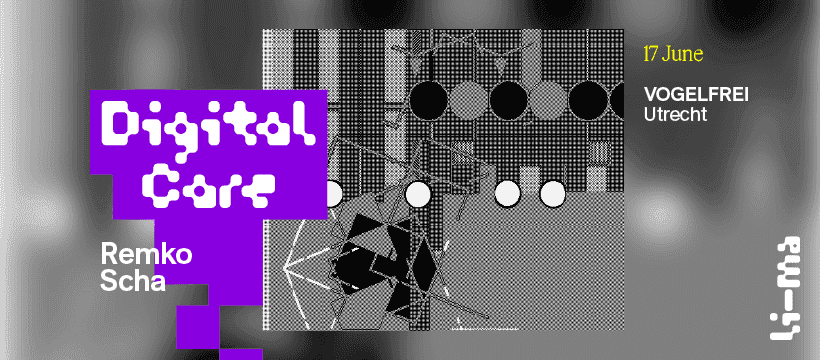
Digital Care: Remko Scha
The third event in the Digital Care series, focusing on re-coded versions of Remko Scha's work.
On 17 June, LI-MA links up with Creative Coding Utrecht and VOGELFREI to present the the re-coded works of Remko Scha’s Artificial. These works will be displayed as part of Digital Care: Remko Scha IAAA ReCoding Artificial. In May, this group of artists will re-code Scha’s Artificial. The original work by Scha consists of a series of aleatoric art generation programs created throughout his career. The artists will come together in a pressure cooker, and will take Scha's Artificial as a starting point to create (a) new work(s). What will happen if we take the concept and technology of a pioneering work from the past, and look at them from today's perspectives? The group will work out new ideas to create prototypes of works that will be displayed at VOGELFREI.
In previous re-coding projects, Creative Coding Utrecht took the same approach: inspiring a new generation of makers through the work of a Dutch pioneer in Media Art. Last year we worked with Edwin van der Heide to re-code his work Speed of Sound. In one weekend, guided by Van der Heide, a group of young makers worked on the concept of (audio) feedback. This resulted in three sound installations that were displayed at Art Machines 2022, a festival about art, technology and music.
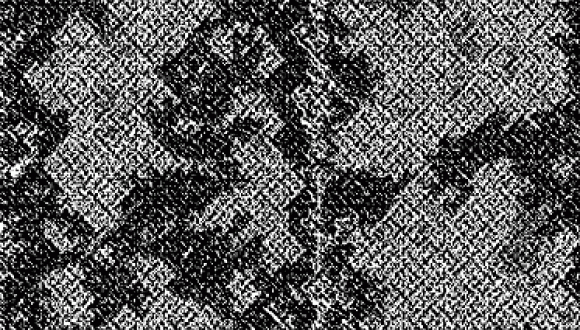
This autumn, LI-MA and Nieuwe Instituut will present REBOOT. Pioneering Digital Art, an exhibition at Nieuwe Instituut. Remko Scha's Institute of Artificial Art Amsterdam (IAAA, 1990-present) is part of this exhibition. Leading up to this exhibition, some of the iconic artworks will be explored and contextualized within a collaborative trajectory entitled Digital Care. Digital Care works will highlight some of the works and take them as a starting point to inspire novel reflections, or re-coding. Amongst them Artificial by Remko Scha (1945-2015), one of the works that he made as part of IAAA.
Rein van der Woerd brought Artificial to the Nintendo DS! He was inspired by the colorful, pixelated output of the program that wouldn't look out of place on a poster nowadays, and by the old Mac brought to the workshop. The limitations of the graphics hardware are what gives the visual output its shine. In his residency at CCU he researches permacomputing: a philosophy applying ecological thinking to computers. Through hands-on workshops and DIY, Rein tries to recover the digital utopianism of Web 1.0 and the first wave of personal computers.
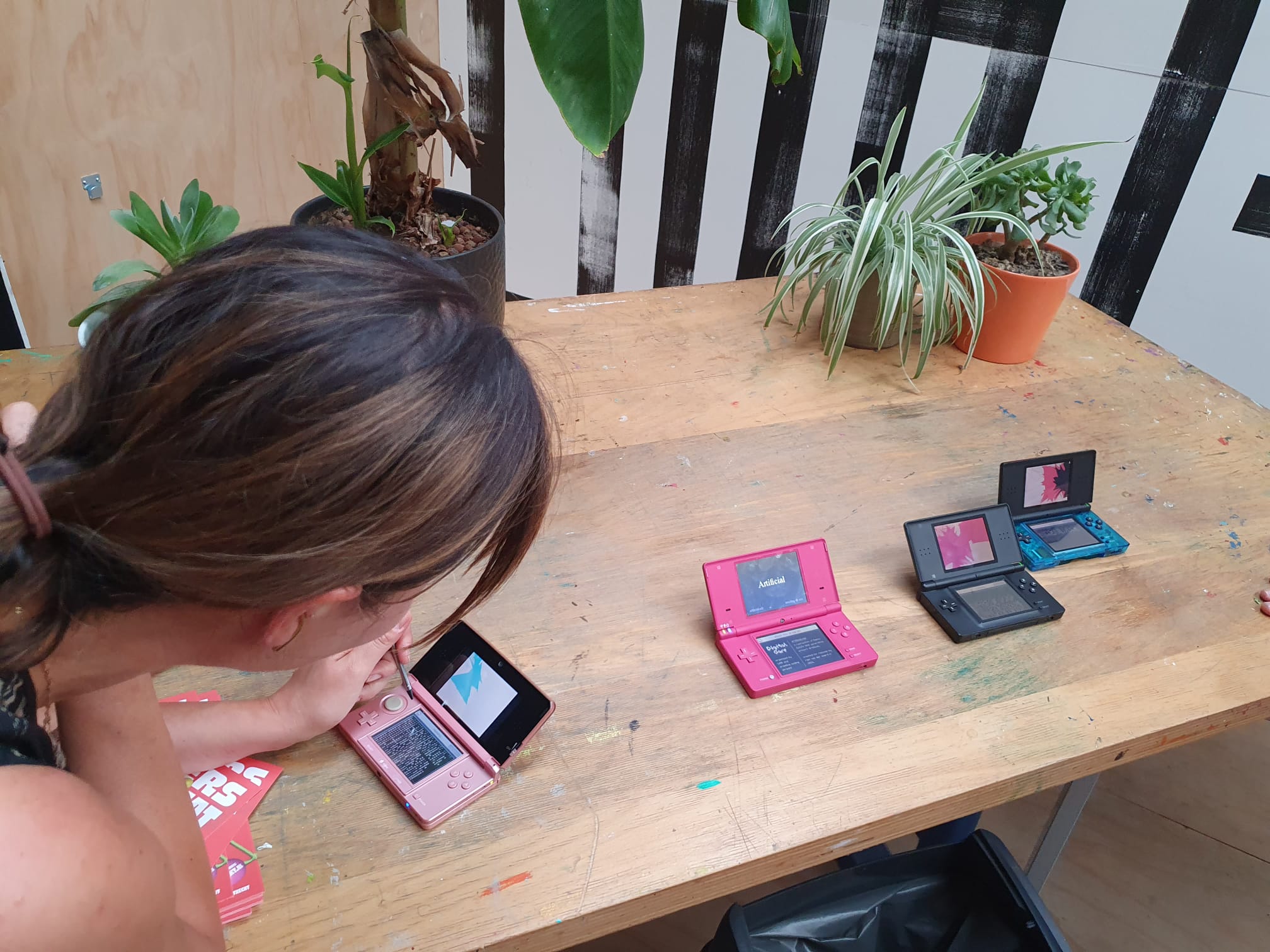
Maxim Schoemaker’s work Artevision created an artificial artist's eye by means of algorithmic decision making and computer vision. Artevision examines the interplay between artistic intent and the reinterpretation of one's work while it is being produced. Game developer turned creative coder, Maxim Schoemaker explores the intersection between engineering and aesthetics. With his work, he hopes to convince the world that the arts and engineering are not so different after all.
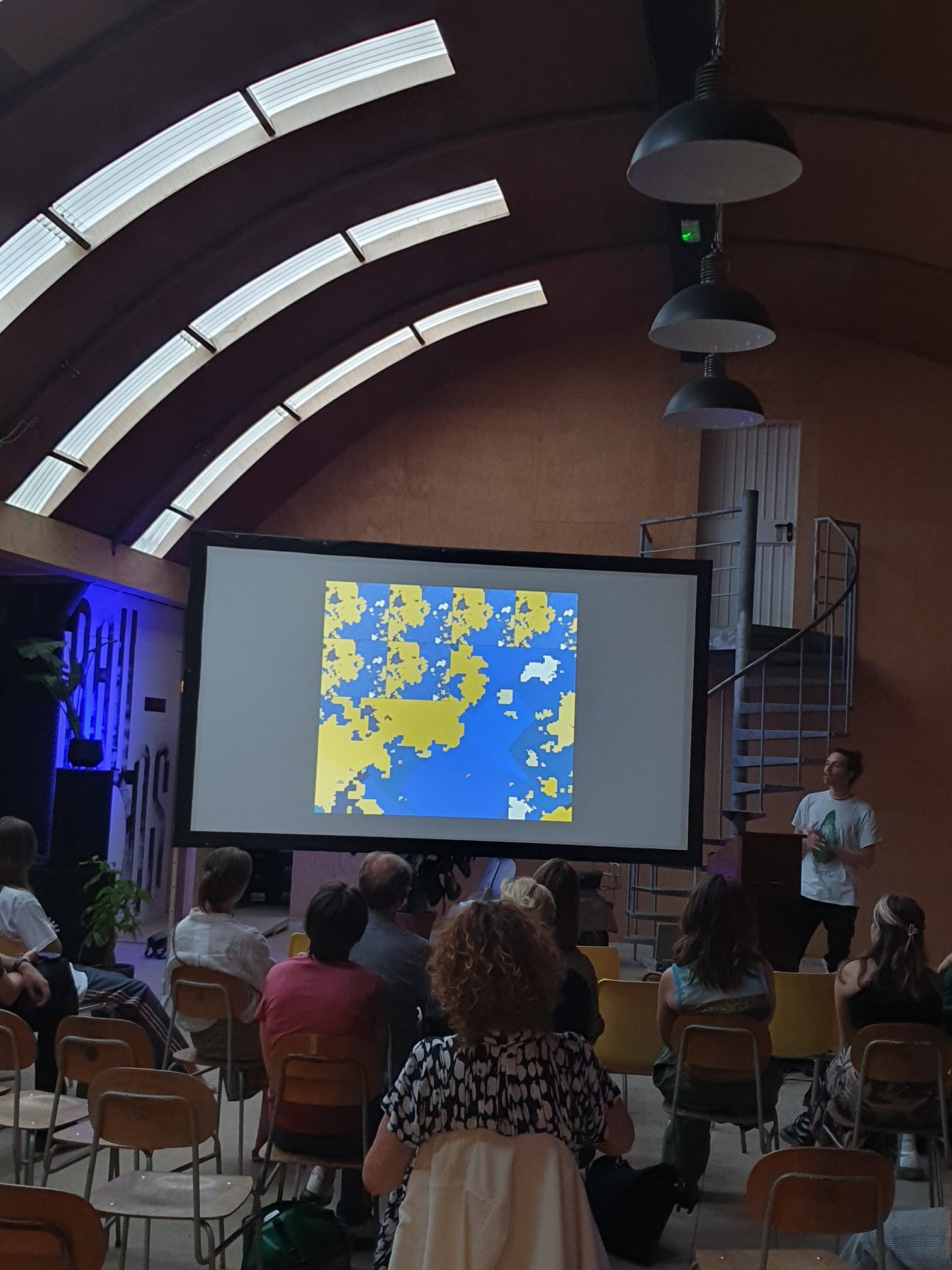
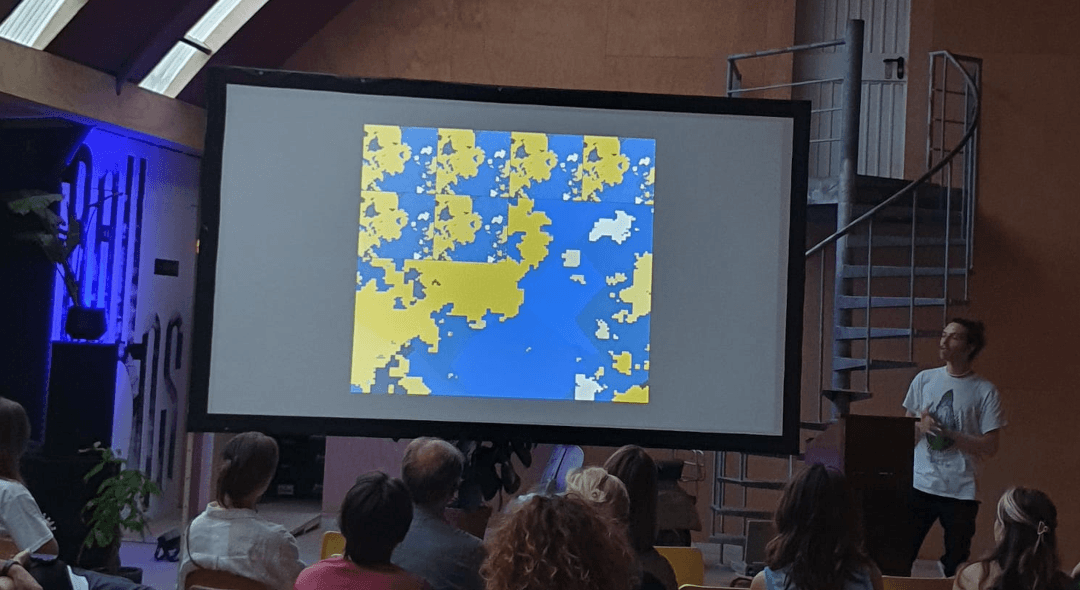
Niki Scheijnen created a series of completely unique, computer generated works that are created and destroyed with the press of a button. By adding human agency to the authority of the computer, Niki is exploring the influence of intentionality on computer generated artworks. Also known as Nikilia, she uses analog and DIY electronics to create experimental VJ and live coding performances. With a focus on online activism, data, microwaves, and feminism she creats thought-provoking, accessible works.
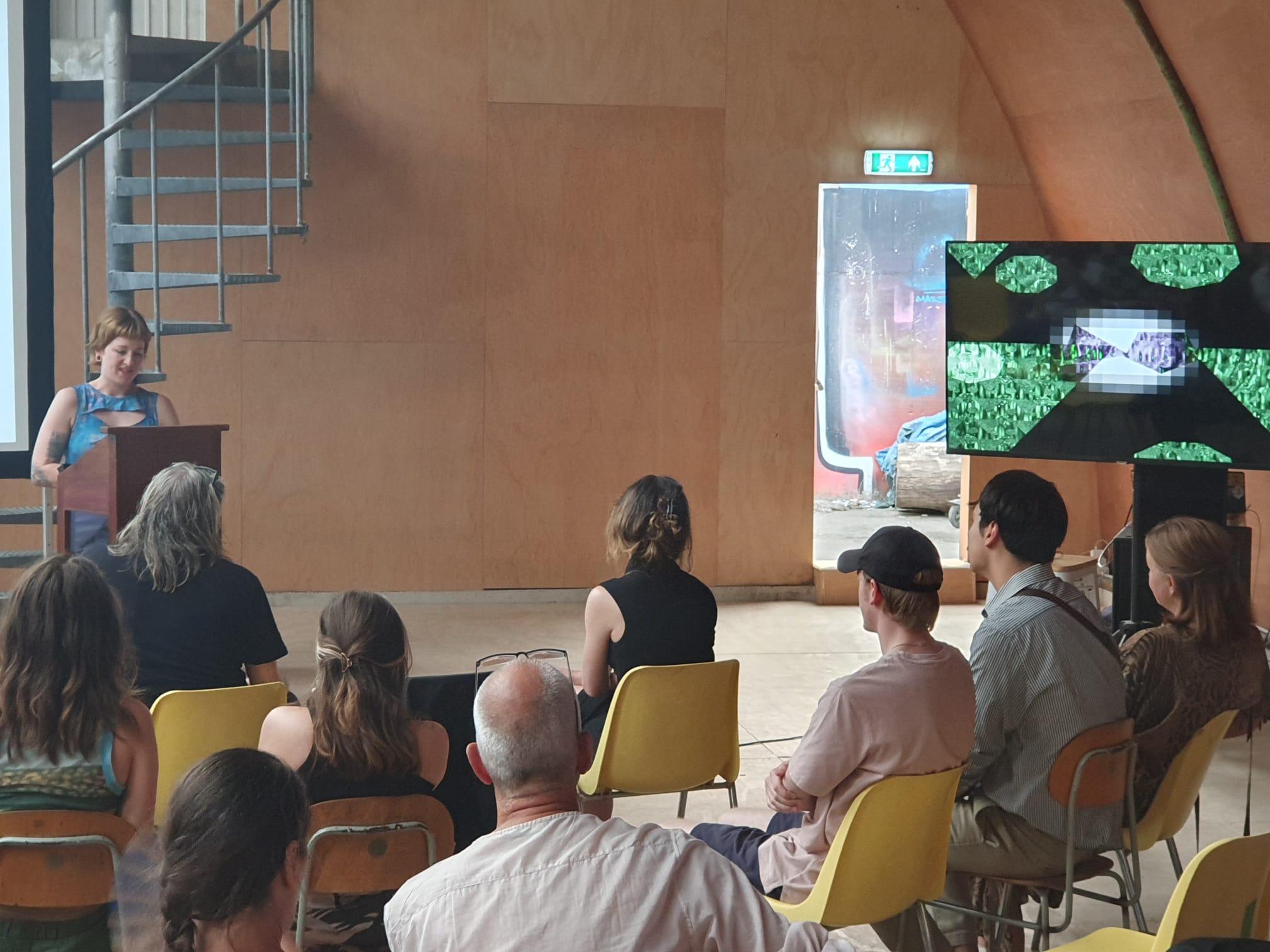
Darien Brito applied the aesthetic and aleatoric qualities of Artificial to create an infinite generator of images that is constantly in motion. No final output is ever reached: a flow of black & white graphics keeps mutating in an ever-evolving process. Darien is a creative coder and audiovisual artist, creating artworks with many different formats, from instrumental and electronic music to interactive installations and generative art.
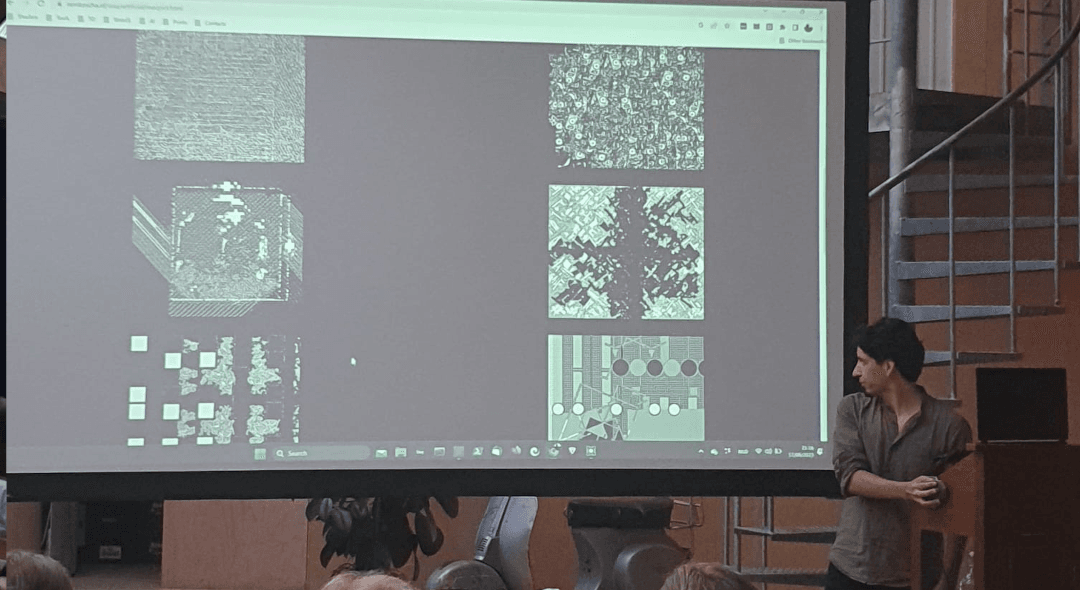
Joyce den Hertog added an extra dimension to Scha’s work in Artificial 3D, making use of the advances to digital rendering techniques that have been made since the original work in the 1990s. Joyce is a graduating student in Media Technology. With a background in informatics and a passion for dance, she aims to connect people through interactive installations, movement, and immersive visuals, all through an interdisciplinary lens.
![Remko Scha's Artificial at VOGELFREI. Pictures by Sonia Milowska [3].png](https://site24.li-ma.nl/strapi/uploads/Remko_Scha_s_Artificial_at_VOGELFREI_Pictures_by_Sonia_Milowska_3_1cc111bf19.png)
Jos de Bruin
Jos de Bruin first met Remko in the late seventies, at a gathering establishing the first AI society of The Netherlands, which perhaps was a bit premature as there were at most a dozen people working on AI in The Netherlands at the time. In 1984 Remko and Jos together moved to BBN Labs, USA, one of the major AI research centers at the time, where they worked on natural language processing. When they returned to The Netherlands, they went their separate ways for a couple of years but in the mid-nineties they started to collaborate again, on artificial art and design. They did a number of joint exhibitions around the artificial program, and Jos implemented various applications of the artificial approach to architecture, graphical house styles and the design of vases. They did joint research on automatic data visualization and lately on models of child language acquisition. When Remko became ill, Jos organized several exhibitions around The Machines, a group of fan motors, electric drills and electric sabre saws playing electric guitars by means of rotating strings, rotating metal brushes, vibrating metal bars and vibrating ropes.
Hein Eberson
From 1992 to 1999, Remko Scha worked with visual artist and designer Hein Eberson on Artificial. Eberson produced exhibitions of Artificial in Artis Den Bosch, Galerie Rian van Rijsbergen Rotterdam, Gallery Acud Berlin and Voges & Deisen in Frankfurt and a performance in Zaal de Unie. Together they published the principles of Artificial in Computer – Language (Mediamatic volume 6 no. 2/3, 1991). Eberson also compiled the publication Artificial (1993), with texts by Remko Scha, Dirk van Weelden and Peter van Emde Boas, among others.
Sanneke Huisman
Sanneke Huisman (1985) is trained as an art historian, and works as writer, critic and curator with a focus on media art. She is co-editor of A Critical History of Media Art in the Netherlands: Platforms, Policies, Technologies (2019). At LI-MA, she is active as a curator; recent projects include Cultural Matter (2017-2020), Digital Canon of the Netherlands (2017-2019) LIMA Online (2020-2021) and Mediakunst op Wikipedia (2021-2023). Together with Klaas Kuitenbrouwer (Nieuwe Instituut) she is currently co-curator of REBOOT. Pioneering digital art. Furthermore, she writes about contemporary art for magazines and exhibition catalogs, including Metropolis M and Centraal Museum Utrecht, is a guest lecturer and works as an advisor at Creative Industries Fund NL and Cultuurloket DigitALL.
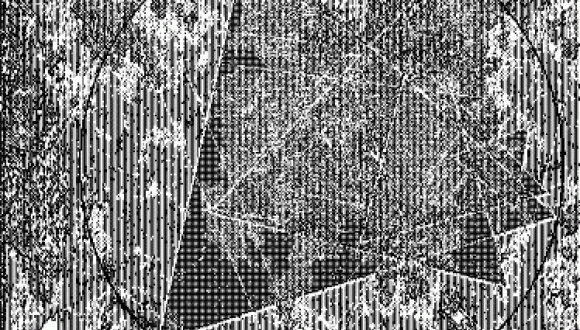
Digital Care
Digital Care presents collaborative care for digital artworks through an open process. From March until October 2023, iconic works, including the_living, 1997-1998, by Debra Solomon, Ideofoon I, 1970-2013, by Dick Raaijmakers and Institute of Artificial Art Amsterdam, 1990-present, by Remko Scha, have been researched and shown in public programmes across the country. Talks with artists, scholars, producers, technicians and the public have explored what it means to present these works today – and preserve them for a future generation.
Nieuwe Instituut and LI-MA present the exhibition REBOOT: Pioneering Digital Art. Featuring key works from the Netherlands from 1960 to 2000, plus new work by contemporary makers, REBOOT reveals the influence of digital technology on art and society. The Digital Care trajectory functions as a strong basis for the run-up of this public exhibition which runs from 7 October 2023 to 1 April 2024 at Nieuwe Instituut.
REBOOT
REBOOT. Pioneering Digital Art opened at Nieuwe Instituut in Rotterdam on 7 October 2023 until 12 May 2024. The exhibition, an initiative of LI-MA and Nieuwe Instituut, celebrates the pioneering history of digital art and culture in the Netherlands. Curators Sanneke Huisman (LI-MA) and Klaas Kuitenbrouwer (Nieuwe Instituut) created the exhibition based around twenty ground-breaking digital artworks from the Netherlands from the period 1960-2000. The works were taken from the Digital Canon (1960-2000), a non-exhaustive, unfixed overview of influential digital art, which was compiled by experts in 2017–2019 and commissioned by LI-MA. In addition, they commissioned nine new works from ten contemporary makers, who took inspiration from these classics to explore how the debates they prompted remain relevant today.
The Digital Care programme centred on (the care for) several of these canonical works, in the lead up to and during REBOOT.
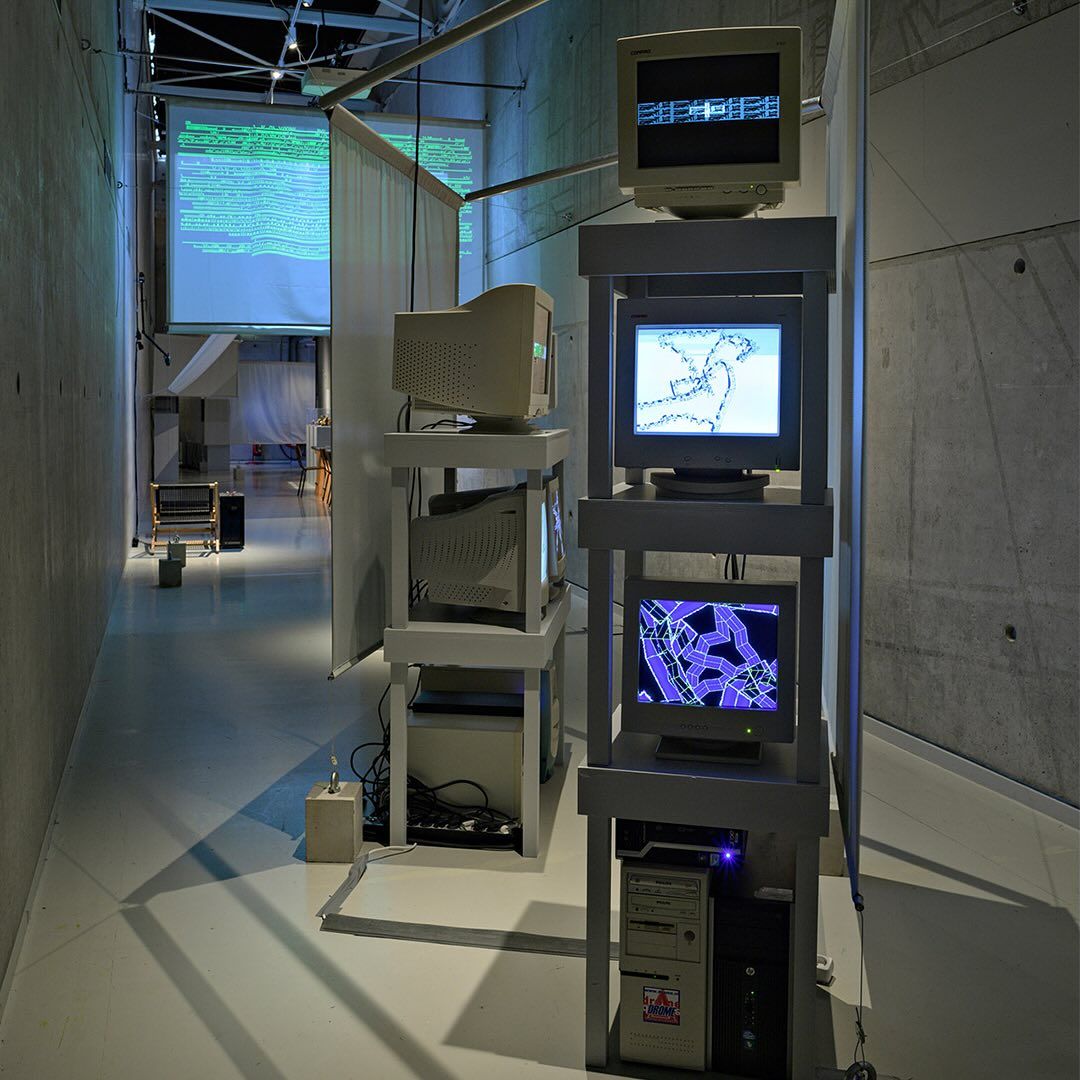
Event details
Digital Care: Remko Scha IAAA. ReCoding Artificial
A collaboration between LI-MA x Creative Coding Utrecht x VOGELFREI
Saturday, 17 June, 2023
VOGELFREI, Nijverheidsweg 6, 3534AM Utrecht
Doors 19.30 // Programme begins 20.00
Entry: €7,50 (regular) / €5,- (student)
Get your tickets HERE
Attend the event on Facebook
Digital Care and REBOOT are supported by Creative Industries Fund NL, Mondriaan Fund, and Network Archives Design and Digital Culture.
Images from 'Artificial' (1990) by Remko Scha, and of event by Sonia Milewska. Final image of 'Artificial' (1990) by Remko Scha at REBOOT. Pioneering Digital Art by Pieter Kers (beeld.nu).






